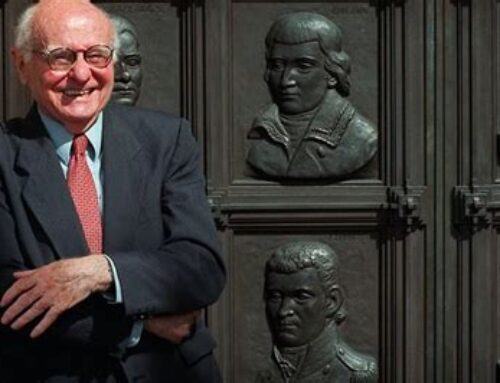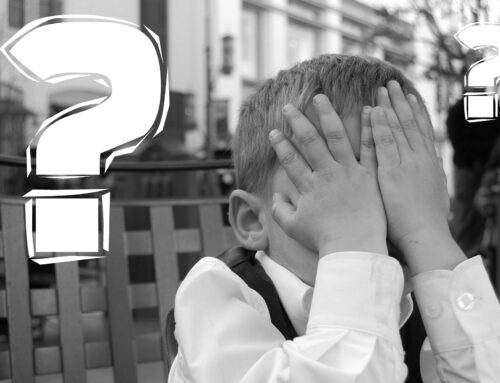Public and media responses to the trial and acquittal of Kyle Rittenhouse demonstrate Americans inhabit duelling political realities – depending on where you’re standing. Niels Bohr’s theory of complementarity offers a means to move beyond the paradox and toward a domain of more fruitful dialogue and understanding.
When Kyle Rittenhouse was seventeen years old, he shot three people on the streets of Kenosha, Wisconsin. Two of his victims died and one was gravely injured. On the 19th of November 2021, more than twelve months after these incidents, a jury found Kyle not guilty of all charges the state had brought against him. With respect to Kyle, Kenosha, Black Lives Matter, and the trial and its verdict, those above are the only facts upon which most people will agree. The description of reality, however, to which these facts belong, is another matter entirely.
Depending on where you’re standing these events demonstrate either that the U.S. judicial system still works as intended and one’s right to self-defence remains; or, they confirm that the U.S. is structurally racist and two systems of justice prevail, subject to whether you’re white or not. This dilemma represents much more than a simple misunderstanding or lack of information on one side or the other. Depending on where you’re standing you quite literally inhabit a different reality from a significant portion of your fellow peers. Worse still, these duelling realities are mutually exclusive and utterly incompatible with one another. There is no way to reconcile your description of reality with that of the other. So far as you’re concerned, those people who see Kyle’s case differently may as well live on another planet.
This is not an essay about the why-come of this dilemma. For the sake of an easy answer, let’s just say it’s the proliferation of diverse media sources and our ability to self-select networks, creating information silos through social media. I’m much more concerned about the political consequences of this ‘new normal;’ the question of fellow citizens ostensibly comprising one and the same polity, while simultaneously inhabiting duelling political realities.
Duelling Realities and Democracy
The debate surrounding his thesis notwithstanding, Jürgen Habermas claimed an accessible public sphere was the sine qua non of a healthy democratic society. Habermas argues the public sphere is the “realm of our social life in which something approaching public opinion can be formed.” This claim raises the question, ‘what becomes of our democratic society if Habermas’ public sphere is bifurcated, becoming dichotomous, irreconcilable, and mutually exclusive?’ In other words, what becomes of democracy if the public sphere is rent in two, with the inhabitants of each portion marooned in their own isolated and paradoxical hemisphere? No matter where you land on this question, the answer can’t be, ‘it’s a good thing.’ Even if you only accept the minimum condition of a public sphere, surely in a democratic system we need enfranchised citizens to share one political reality? That is not to say people need to agree on the facts, let alone the interpretation, but it would seem contrary to sound reason to have members of one and the same ‘society,’ voting upon its administration if they simultaneously inhabit duelling political realities. This goes far beyond mere political polarisation and approaches the realm of political dis-location.
Political and Quantum Paradoxes
Our political situation reminds me a great deal of the situation in science with which the founders of quantum physics were confronted in the 1920s. Depending on where you were doing your work, depending on what kinds of experiments you were conducting, nature was revealing herself in mutually exclusive and paradoxical ways. If between 1923 and 1927, you were apprenticed to Clinton Davisson and Lester Germer in New Jersey, you had every reason to believe that De Broglie’s light-wave hypothesis had emerged as a fact of nature. On the other hand, at roughly the same time, if you found yourself conducting experiments in the Missouri laboratory of Arthur Compton, you might be convinced that light was in fact a particle, and not a wave at all! How is this possible? Which description of such a fundamental aspect of reality was correct?
Into this debate waded Niels Bohr.
Bohr, who had been wrestling with and running up against quantum paradoxes his entire career, made an entirely different suggestion. What if the problem didn’t rest with our ability to have nature qua reality reveal her secrets accurately? What if the problem was intimately, and necessarily, tied to our ability to generate knowledge about nature qua reality, in principle? In other words, what if quantum physics revealed a problem of knowledge, rather than a problem with nature? This was Bohr’s contention: quantum physics had demonstrated there was something fundamentally incompatible with single picture descriptions and certain aspects of reality. Furthermore, Bohr found that due to this fundamental problem of knowledge, reality would persistently present itself, through our senses and cognitive faculties, in mutually exclusive and paradoxical ways. It was the empirical manner in which we gathered information about the world, combined with the cognitive necessity of producing single pictures described according to the laws of classical physics, that ensured emergent paradoxes and mutually exclusive and irreconcilable descriptions of reality, given an abundance of phenomena resisted human epistemology.
Bohr’s Solution
Bohr’s solution to the problem of knowledge was his theory of complementarity. In short, complementarity asserts that, in many instances, single picture descriptions of phenomena are insufficient. Instead, we must look upon these mutually exclusive descriptions as complementing rather than competing with one another. This means that light is not a wave or a particle, nor is light a wave and a particle. Instead, light – whatever it is – can only be comprehended with recourse to both a wave and particle description. In such a way, Bohr argued that light was an example of a phenomenon in nature – i.e., an aspect of reality – that resisted human epistemology. We can never really know what light is, the best we can hope for is a more comprehensive description. And, the most comprehensive description of light available to us is one where its wave and particle behaviours are taken as complementary features of its reality. Indeed, if we wanted to understand more about light, we would be best served by interrogating the way in which our experiments had generated the particular pictures of light that we considered mutually exclusive. In other words, we might come to a fuller understanding of light by examining the manner in which our own investigations of light had produced the respective wave and corpuscular descriptions of its behaviour.
Bohr invited us to consider that paradoxes aren’t paradoxes, they are examples of complementarity, and, if we wish to know more about the phenomenon we would be well served by dismantling the circumstances that generated these mutually exclusive descriptions in the first place.
Overcoming the Rittenhouse Paradox
All of this begs the question, ‘how can Bohr’s theory of complementarity help us overcome the paradox of duelling political realities?’
Niels Bohr invited us to keep both descriptions in superposition, not to attempt to collapse either one into the other, nor fuse them into a third. This means we have to resist the temptation to continue pushing the case for our understanding of reality – at least for the time being. Instead, Bohr asks us to decompose the conditions that generated these respective descriptions in the first place. This means asking, ‘how did we come to view this trial as evidence of systemic racism?’ And, ‘what aspects of this phenomenon enabled a claim of self-defence?’ Employing this kind of epistemic strategy – disentangling these duelling realities through the lens of complementarity – we come upon an entirely different emphasis and form of understanding.
What complementarity reveals is that beyond the duelling realities of self-defence and systemic racism, lie an entirely different set of questions to which these descriptions refer.
- What is the relationship between property and person?
- What is the relationship between protest and violence?
We come to see that the irresolution of these two questions underwrites the mutually exclusive nature of our duelling political realities. It is because Kyle Rittenhouse was led to believe he had a right to protect property up to and including the taking of another person’s life that he ventured into the Kenosha streets that night, armed with an AR-15. It was because the BLM protests following the shooting of Jacob Blake were accompanied by violence and looting, that they no longer reflect legitimate protest in the minds of many Americans.
Due to the particular and peculiar history of the United States, there is an outstanding question, upon which no agreement exists, concerning the relationship between property and person. Indeed, this question requires a clear conception of the value placed upon persons and that placed upon property. This situation is further complicated since, historically, certain persons were at one time viewed in the United States as property! Until agreement is reached, or legislation created establishing the boundaries between these two concerns – confirming which takes priority: personal property or other persons – the circumstances necessary for the generation of these duelling political realities will persist.
Furthermore, due to the particular and peculiar history of the United States, there is an outstanding question, upon which no agreement exists, concerning the relationship between protest and violence. At what point does violence make protest illegitimate? To what degree and in what sense is violence a legitimate form of protest? Until agreement is reached, or legislation created establishing the boundaries between these two concerns – confirming either the co-constitution of violence and protest or the limits of their intersection – the circumstances necessary for the generation of these duelling political realities will persist.
This was the insight offered by Niels Bohr, almost one hundred years ago: by keeping our mutually exclusive descriptions of (political) reality in superposition and interrogating the conditions of their creation, we find ourselves able to form a more comprehensive explanation of the phenomena underwriting these respective descriptions, and, thus, move beyond the paradox to a domain of more fruitful dialogue and understanding.







Leave a Reply